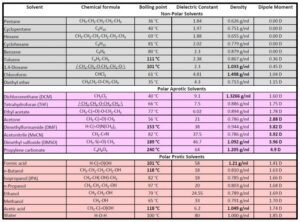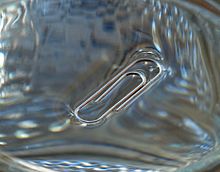The size of cavitation bubbles produced in an ultrasonic cleaning bath depends primarily on the ultrasonic frequency. The number of cavitation bubbles depends on both the ultrasonic frequency and the ultrasonic power being introduced into the cleaning tank. Frequency – Higher ultrasonic frequencies produce smaller cavitation bubbles than lower frequencies. This is at least partially due … Continued
The concept of a barrier layer in ultrasonic cleaning can be a little difficult to understand – in fact, a lot of people don’t even know what “barrier layer” means. In this blog, I’ll attempt to describe what the barrier layer is and how the thickness of the barrier layer is affected by changing ultrasonic frequency. The … Continued
In a previous post, Ultrasonic Cleaning – Soluble Contaminants, I discussed the effect that ultrasonic cavitation and implosion play in enhancing the removal of soluble contaminants from surfaces. Today’s blog will introduce the effect that ultrasonic cavitation and implosion have on the removal of insoluble particles from surfaces. There are several mechanisms that can cause … Continued
In the blog entitled Get a Move On, I briefly discussed the importance of some form of mechanical action to assist cleaning. This is true in both the case of soluble and insoluble contaminants. In this blog I will dig a little deeper into the subject of the benefits of mechanical action in removing soluble … Continued
Solvents are a bit difficult to understand for a number of reasons. Even for someone who has worked with solvents as much as I have, the permutations of solvents, their combinations and their capabilities are bewildering. But, let’s start with the simple stuff. A solvent dissolves what is called a solute. In what is probably the … Continued
Previous blogs have explained the benefits of relative motion between the part being cleaned or rinsed and the liquid in contact with the part. Relative motion can be accomplished by moving either the part or the liquid relative to the other. Ultrasonic agitation has also been identified as beneficial to cleaning and rinsing for somewhat the … Continued
Liquid motion within and around a submerged part is one of many ways of enhancing both cleaning and rising processes. In an earlier blog, The BIG Four agitation was described as one of the “big four” variables having a major impact on cleaning and rinsing. In simple terms, agitation means moving the processing liquid relative to … Continued
Look around you. Triangles are everywhere! Any structure requiring a strong and rigid construction depends on triangles to achieve that goal. Even though they might not be obvious or even seen for that matter, triangles are at work wherever strength and rigidity are important. The triangle is the only two dimensional polygon that if constructed … Continued
Preceeding blogs have discussed de-ionized or “DI” water, its benefits and its uses at some length. Today’s blog will discuss “Reverse Osmosis” water otherwise known as “RO” water. RO water is like a second cousin of de-ionized water. In the de-ionization process, potentially ALL ions are removed resulting in water that can approach the ultimate limit for pure … Continued
The surface tension of a liquid, as we have discussed earlier, is an important consideration in the selection of cleaning chemistry for a particular application but it also has relevance in several other ways as well. In earlier blogs, I have frequently referred to the importance of surface tension but haven’t really discussed what surface tension … Continued







